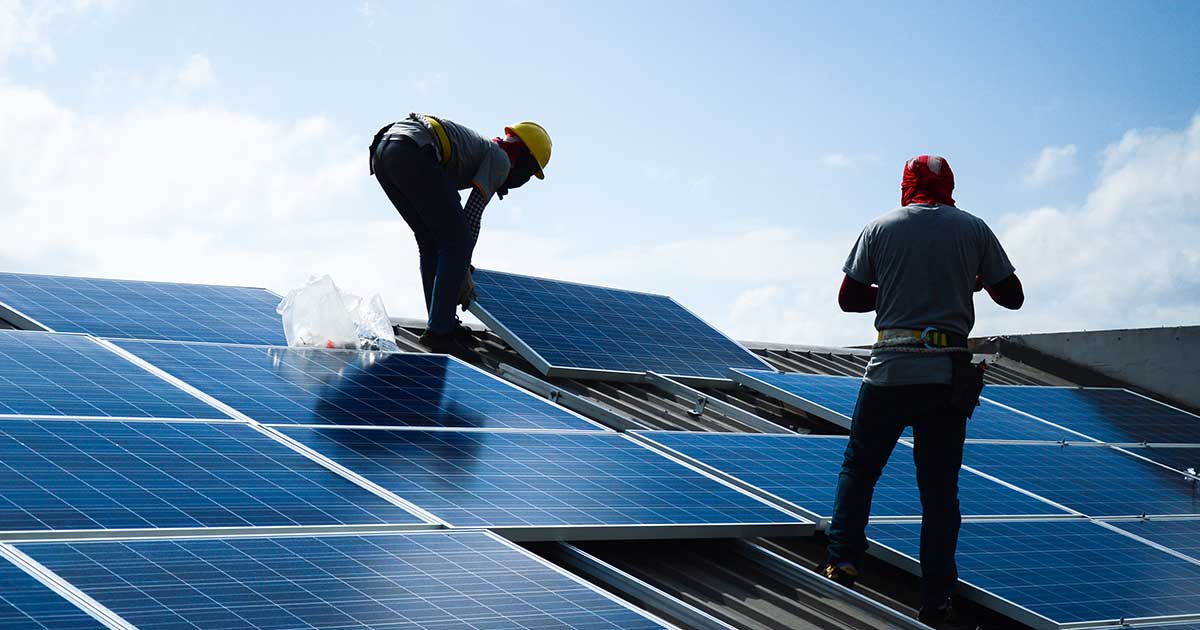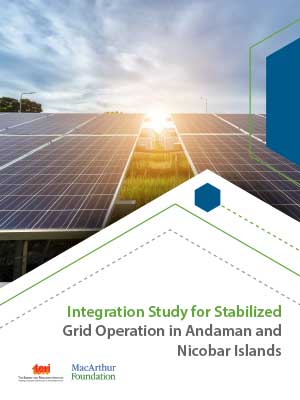Integration study for the grid operation in Andaman and Nicobar Islands for proposed solar capacity
TERI conducted an integration study for stabilised grid operation in the Andaman and Nicobar Islands to integrate solar energy in the grid in combination with either LNG or diesel generator sets

The power distribution system of the Andaman and Nicobar (A&N) Islands is a 'stand-alone system', with each island having its own system. The electricity department (ED) of A&N administration is responsible for managing the electricity supply in the islands. Currently, they are dependent on diesel-generated power, which is costly, generates pollution, and affects India's energy security. In view of this, the island administration, with the help of the Government of India, envisaged to widely employ renewable energy.
Under the project, TERI carried out load flow studies that looked at various scenarios where solar energy was used in combination with either Liquid Natural Gas (LNG) or diesel generators to meet the demand as per load growth projections of South Andaman in steady-state conditions.
Integration Study for Stabilised Grid Operation in Andaman and Nicobar Islands
Uploaded on: 10th March 2021
A stabilised grid operation for the islands by developing a grid code that may include renewable energy generation and demand forecasting on daily basis, suggests the report
The challenges faced by the electricity department of the Andaman and Nicobar Islands have been reported in different categories, namely, technical, operational, and financial. As the power lines, energy generation and distribution in the islands is disconnected from mainland India, they are dependent on diesel-generated power, which is costly, generates pollution, and affects energy security.
A&N Islands fulfill 10% of their energy requirement through Renewable Energy sources, which comprise small hydro and solar power plants. A&N administration intends to achieve 25% of the energy generation through RE sources by the end of 2022.
In view of aiding the A&N administration with support from the Government of India to increase share of Renewable Energy in the power generation, integration and grid stability, the study presents the following inferences/recommendations:
- It is observed that the projected generation shall be sufficient to meet the demand as per load growth projections of South Andaman in steady-state conditions. However,
- Suitable reactive power compensation would be needed for the scenario with ‘only LNG and photovoltaic (PV)', as low-voltage conditions at various 33 kV and 11 kV feeders are observed with transformers loading at Phoenix Bay Power House near the threshold
- Batteries with peak-shifting features would be required as during daytime PV production is greater than the load, in other words, it is a high PV scenario (50 MWp)
- In scenarios with diesel generators (DGs), it was observed that both voltage and loading are within limits, and battery to reduce PV intermittency is recommended.
- Improvement in the communication system is recommended as it is manual, very high frequency-based communication system.
- Renovation and modernisation of the distribution network is needed to revisit the long-distance distribution lines
- It is recommended to develop a grid code for the islands, which may include, among others, renewable energy generation and demand forecasting on daily basis. A Renewable Energy Management Centre is already planned for the Andaman Islands, which may be considered for assigning this task. This would facilitate preparation of a daily schedule on a 15-min basis in the day ahead based on the projected demand, solar generation, and availability of other generators. Planning of the day-ahead scheduling is important as it is observed that the operating cost of diesel/LNG generator could be minimised when solar power is used as much as possible; the total energy excess or deficiency due to forecasting error is fully compensated by energy storage systems (ESS). However, the ESS must provide fast frequency response if a generator trips.
- Generators and loads may be suitably incentivised to maintain frequency within the operating band during real-time operation, which may include a three-part tariff for the generators and a time-of-day tariff for consumers.

